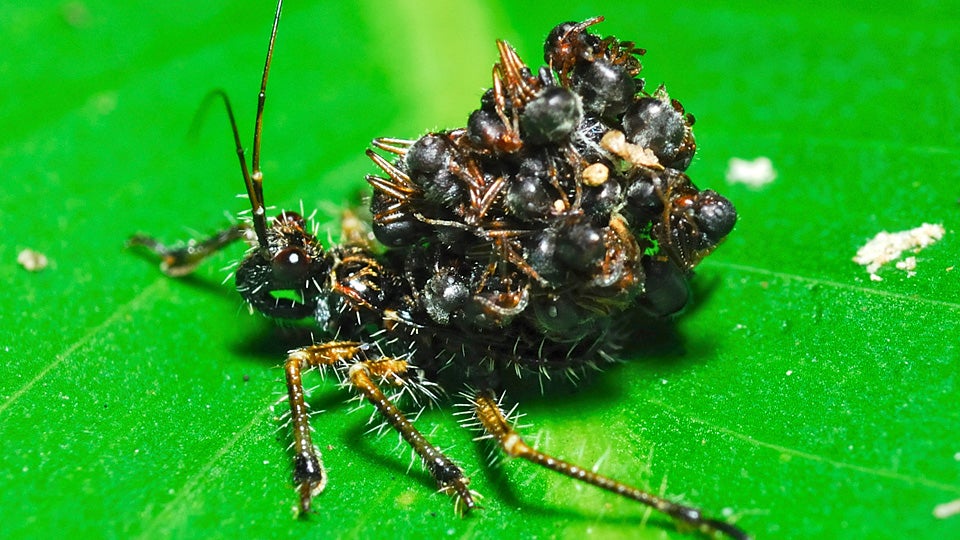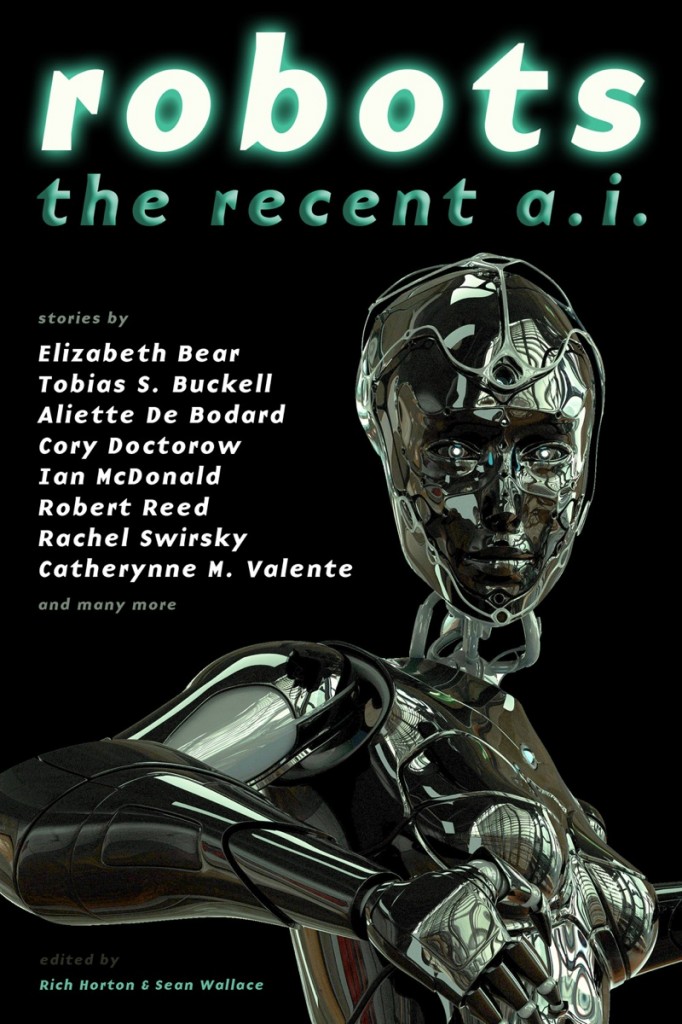Part II is here:

Whoa. This collection,
Far, brings the guns just like
Near did. This time around, though, we are in the future. And if anything, things seem to have gotten worse, even if they are brighter and better lit by to the overhead halogen lights of your cubicle-home.
Cat Rambo's exploration of advertising, products, commercialism, and consumerism are only exacerbated in stories like "Surrogates", "Seeking Nothing", "Amid the Words of War", and "Zeppelin Follies", the last of which Rambo claims was her attempt at slapstick comedy. It's not that it wasn't funny, it's just that standing back, looking at the world of commercialism she created, where writers write by managing software that spits out endless variations of the same story for every conceivable market niche and everyone wears malleable Bodies that keep the actual world at arms length, well, it's pretty frightening from my standpoint because it's a dystopia where the depicted society isn't all that unhappy, like in
Brave New World. Often cited as the model dystopia, Brave New World is really a social satire or even utopian satire (Huxley called it a "negative utopia": the drugged out disconnected world is, by and large, "happy"). It is implied in "Surrogates" and "Five Ways to Fall in Love on Planet Porcelain" that the rich are happy because they've built a world of consumerism based on picking the fruits of lower caste's labors, which implies that the rest of the world could indeed be a dystopia. How is this different from our current world? Blood diamonds and oil shales anyone? In Rambo's "Zeppelin Follies" everyone seems pretty content with their hyperconsumerism, which to me is just an extrapolation of where we are headed. Both "Surrogates" and "Zeppelin Follies" reminded me of David Mitchell's Nea So Corpocracy in the "An Orison of Sonmi~451" chapter of
Cloud Atlas, a fantastic book.
If the last collection touched from time to time on the themes of relationships and intimacy, then this collection is the inverse. We're still talking about relationships, but Far is about the inability to find connections and how far we will go to connect. I mean, the protag of "Angry Rose's Lament", a drug addict trying to find some kind of connection to replace his drug craving, contemplates letting an intelligent wasp eat his brain so he can join an immortal group-mind. Yeah, that's what it's about.
After that we have "Seeking Nothing" which is a fucking HAUNTING tale about a young man who is desperate to connect with anyone, absolutely anyone. He's a social outcast managing clones working on a distant planet, who cannot seem to connect with the few non-clone coworkers or his past. It is a frightening tale of utter loneliness. This was by far one of my favorite stories in this collection. The protag's loneliness still lingers in my mind.
"A Querulous Flute of Bone" was also about seeking out a relationship: romantic love. I could see the plot coming a mile away, which was fine, because the story was really an exercise in beautiful world-building. What I loved so much from the first story in the
Near collection, "Mermaids Singing Each to Each", and about the near-future exploration of commercialism of "RealFur", "Vocobox(TM)", and "Therapy Buddha", was the effortless world-building Cat dropped into those stories. And here we see even more of that. "A Querulous Flute of Bone" is like world-building idea after another, though never overwhelming. It left me hungry for more. In the afternotes, Cat says that this story is part of a shared world project started by
Philip Athans, so perhaps there's more.
"Surrogates" seemed a bit like the Far version of "Not Waving, but Drowning", 'cept in a far future society. The protag has an Insanity Chip in her head, which allows her to edit the world she senses. It's a touch Eternal Sunshine of the Spotless Mind, but from a great angle. And her descriptions of the edits the protag sees are immersive.
I'd say that, for me, hands down, the best story in both collections was "Five Ways to Fall in Love on Planet Porcelain". Most stories about falling in love turn me off immediately. It's been done so much. But this story was intimate, beautiful, tragic, and told as smoothly as the character's porcelain skin. I'm pretty shocked it was original to this collection. Original stories tend to be stinkers or just perfectly fine stories, never having gone through the vetting processes of editor crits (I'm sure Hydra House had the story edited, but I mean in the marketplace). Whatever the case, this is my favorite story of the collection.
There are afternotes for the stories in both collections, which is one of my favorite parts to read. It's like the context of the context.
On its own, Far is a strong collection of stories. Together in one book, both collections, Near+Far, represent a selection of Cat Rambo's work over the last five years and show that she is a writer able to capture the human perspective on life and relationships in the most imaginative environments.









